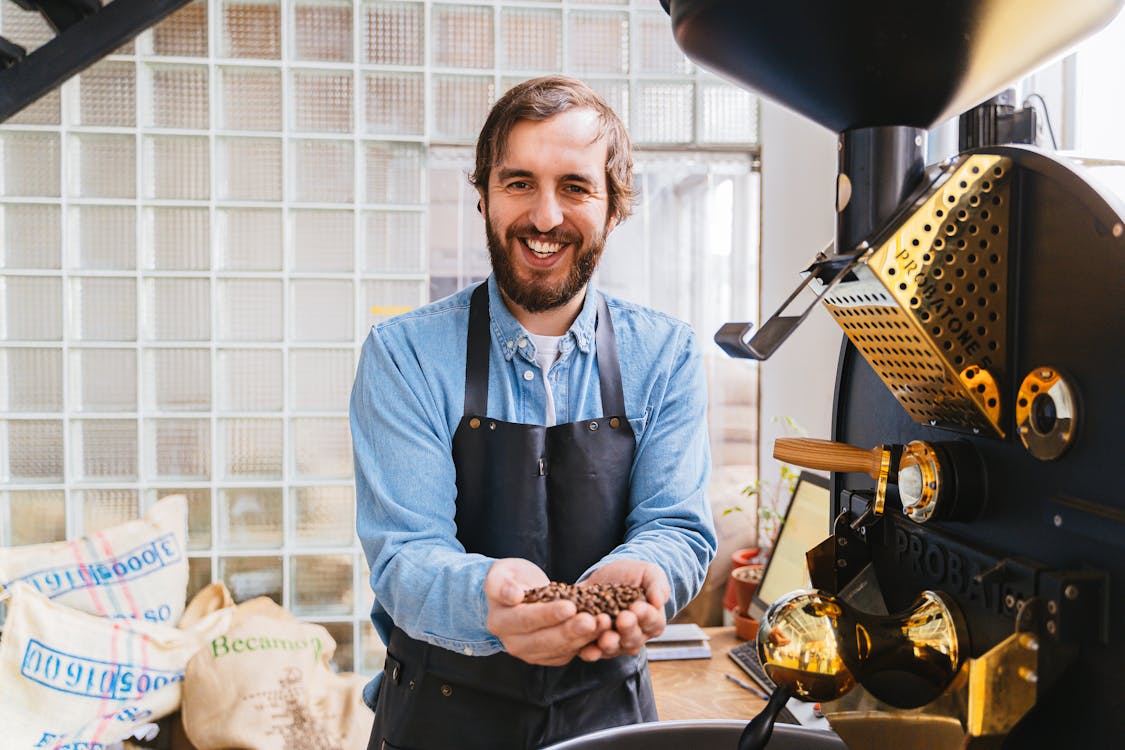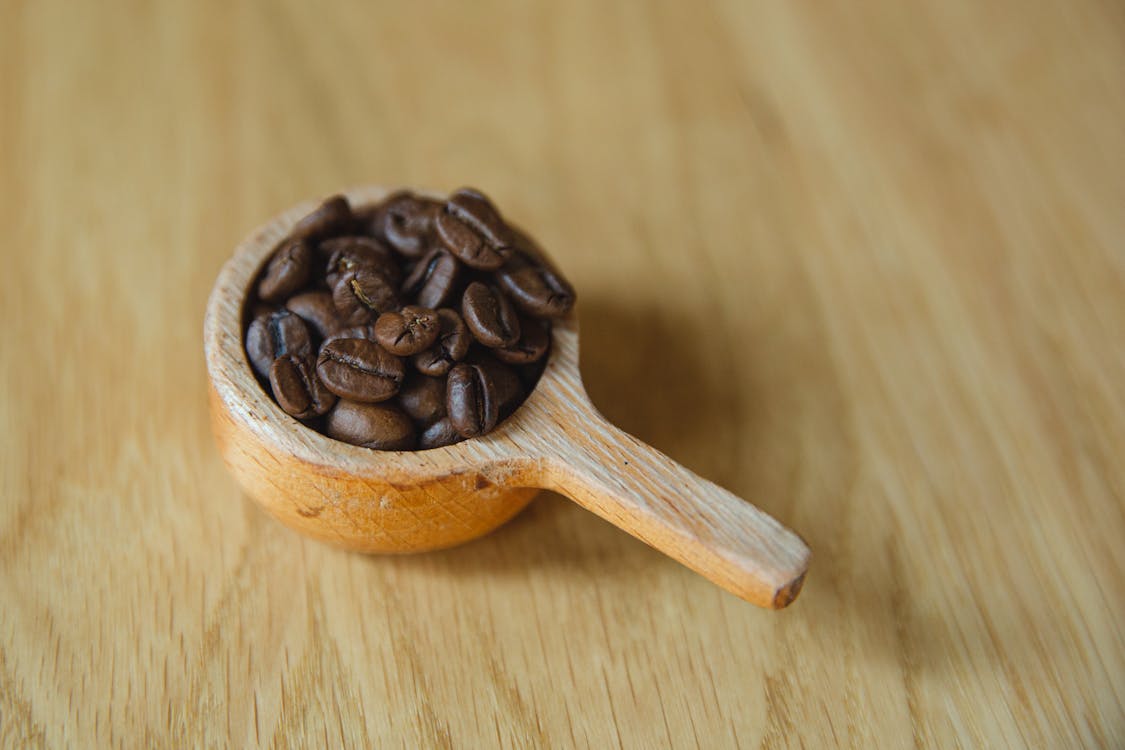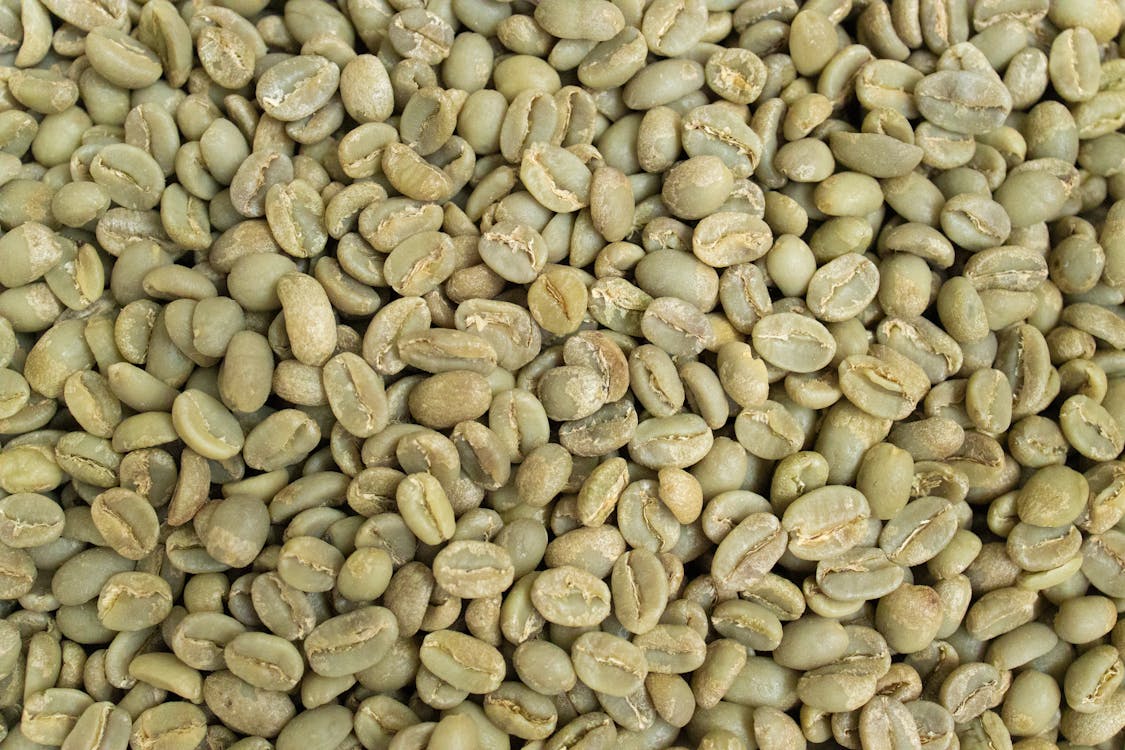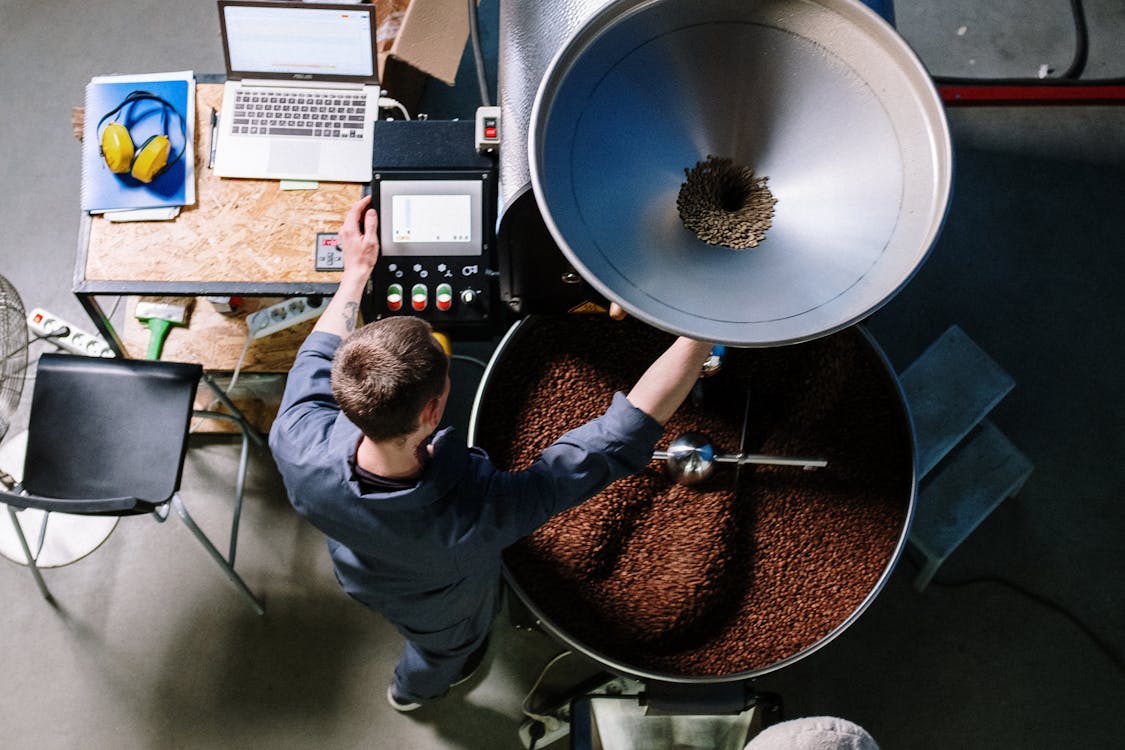Roasting coffee beans is one of the most important steps in the process of making coffee. It’s an art that requires skill, knowledge, and attention to detail to get the perfect cup of Joe that will bring out the flavors and aromas of the coffee beans and make the coffee even more enjoyable.

However, the roasting process can be tricky and time-consuming. In this article, we will explain the basics of roasting coffee beans and provide some tips on how to roast coffee beans to get the perfect cup. We’ll also discuss the different types of roasts and their effects on the flavor and aroma of the coffee.
With the right preparation and technique, you can master the art of roasting coffee beans and create the perfect cup of coffee every time.
Learning the Craft of Home Roasting
Roasting your own coffee beans can seem like a daunting task for beginners, but once you understand the process and gather the necessary equipment, it can become a highly rewarding hobby.

Home roasting also allows you to experiment with different roast levels, from lighter roasts to dark roasts, allowing you to find the perfect roast for your taste.
With practice, you can develop your skills and become an expert coffee roaster, able to create the perfect cup of coffee tailored to your preferences!
Where Green Coffee Beans Begin
Coffee production begins in the fields, with planting. Waiting and tending are the next steps: It can take up to four years for coffee plants to produce the cherries that yield the seeds we call coffee beans.
Everything done at this stage contributes to the origin flavors of the coffee, including the weather conditions, the soil, and whatever crops are around the coffee plant.
The beans are picked and then put through either a wet or dry process to bring them to the green stage that means they're ready for roasting.
Coffee Roasting Machines and Roasting Techniques
There are several methods of roasting coffee beans at home, ranging from dedicated coffee roasting machines all the way to hot air popcorn poppers! Home roasters come in different sizes and styles, from small electric machines to larger, more sophisticated manual roasters.
When it comes to the right home coffee roaster for you, it's usually a toss-up between air coffee roasters vs. drumcoffee roasters.
Drum roasters are larger and more expensive but produce coffee with a wonderfully complex flavor profile.
Air roasters are less expensive and more likely to yield a very likeable cup of coffee. Still, each roaster has its pros and cons to be aware of before you buy.
No matter which roasting method you're using, there comes a point where the moisture content of each bean starts to evaporate and the chemical reactions begin which release the delicious and complex flavors held within each bean.
Discovering Your Perfect Roast

There's a certain thrill in discovering the perfect roast for your taste preferences. Experiment with different roast levels, and take notes on the flavor profiles of each roast. This will help you create a consistent, personalized coffee experience.
Roasting your coffee beans also enables you to explore a world of different beans and blends. Try roasting beans from different countries and regions, and compare their flavors and aromas. This will give you a better appreciation of the art of coffee roasting and the various flavor profiles each origin offers.
Light Roasts
Go for a light roast to enhance the unique flavors of a particular bean without losing them in a heavier roast flavor. (Notice how the strong, smoky flavor in a French or Italian roast takes over any personality the beans may have had.)
Rather than the oily appearance of darker roasts, the beans maintain a more matte finish and, obviously, a lighter hue as well. They also come with more acidity and higher caffeine content.
Since this kind of roast put the beans' flavor in the spotlight, light roasts are generally the cream of the crop, often single origin, and always special.
Darker Roasts
With a longer roasting time comes an entirely different set of flavors from light roasts. Coffee lovers describe dark roasts as having more depth and body, along with sweeter flavors like burnt, caramelized sugar or bittersweet chocolate. The caffeine levels of dark roasts are also lower, and there is less acidic taste.
Medium roasts
A good medium roast will let you know have the best of both the dark and light roast worlds. These beans are roasted just enough to bring out flavors describable as nutty, malty, or milk chocolate without losing some of the distinctive high notes of their unique flavor profiles.
Slightly darker in hue than light roasts, the caffeine content of medium roasts lies in the middle of the spectrum.
Roasting Coffee Beans: Step by Step Guide

1. Buy Green Coffee Beans
You can find green coffee beans online or from local roasters. Buy high-quality beans to ensure the best flavor in your roasted coffee. Green coffee beans have a long shelf life, so you can stock up and roast small batches as needed.
2. Preheat the Roaster
Whether you're using a dedicated home roaster or an oven, start by preheating your roasting device. For home coffee roasters, set the temperature to around 220°C (430°F). For oven roasting, preheat the oven to 375°F (190°C).
3. Measure and Prepare the Green Beans
Weigh the green coffee beans before roasting to ensure consistent results. A good starting point is roasting 100 grams of beans at a time. However, the amount will vary depending on the size of your roaster.
4. Start Roasting
Place the measured green beans in your roaster and start roasting. If you're using an oven, spread the beans on a baking sheet and place it in the preheated oven.
4. Monitor the Roasting Process
Keep an eye on the color of the beans and listen for the "cracking" sounds. There are two cracks during the roasting process. The first crack indicates the beginning of the roast, while the second crack signals the end of the roast. The beans will change from yellow to light brown, then to dark brown, depending on the roast level.
5. Determine the Roast Level
The desired roast level depends on personal taste and the type of coffee bean. Remember that in general, light roasted coffee beans are more acidic and retain more of the beans' original flavors, while dark roasted coffee beans have less acidity, more body, and a stronger, bolder flavor. The roast level is also determined by the roasting time:
-
Light Roast: Roast for 8-10 minutes.
-
Medium Roast: Roast for 11-13 minutes.
-
Dark Roast: Roast for 14-17 minutes.
6. Cool the Beans
Once you achieve the desired roast level, remove the beans from the heat source and cool them as quickly as possible in the cooling tray. Use a metal colander to shake the beans and remove any chaff (the outer shell of the beans).
7. Store the Roasted Beans
Store the roasted coffee beans in an airtight container and keep them in a cool, dark place. For the best flavor, wait at least one day before brewing, as freshly roasted beans contain carbon dioxide that can affect the taste.
Roasted coffee beans have a peak freshness period of about two weeks, so it's best to roast small batches and consume them within that time frame.
Final Thoughts

Mastering the art of coffee roasting takes time, patience, and practice. By investing in the right equipment and honing your skills, you can create a delicious and customized coffee experience.
Embrace the craft of home roasting and enjoy the satisfaction of savoring a perfect cup of espresso or French press brew made from roasting your own coffee beans.
Remember to start small, practice, and eventually, you will find the perfect roast to suit your taste. Enjoy the journey of coffee roasting, and share your newfound skills and passion with friends and family. Because with great coffee, life becomes an even more beautiful and flavorful experience.
Do you roast your own coffee? Are you on the fence about doing so or have a question? Leave us a comment below!





Shumbusho saidi
September 04, 2025
I’m shumbusho saidi located in Kigali Rwanda nyamirambo I’m barista I’m very happy to read your books of coffee roasting can you give me some chance to teach me roast please or you find me barista job